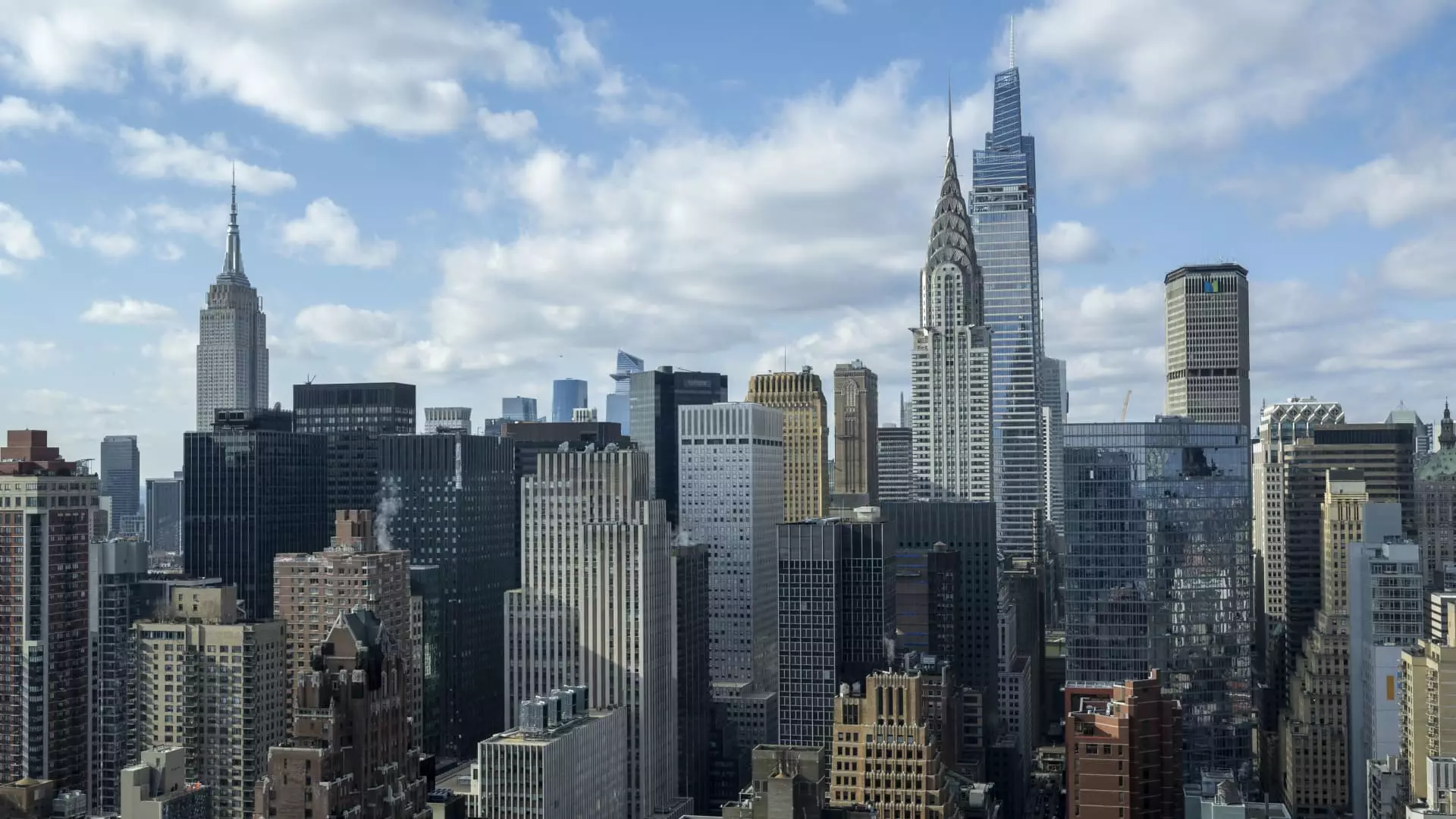The office space sector in New York City has finally experienced a significant revival, signaling a shift back to familiar workplace dynamics. The revitalization is not merely about restoring former norms; it encapsulates broader economic trends and influences affecting the city’s real estate landscape. As companies rally to bring employees back into physical spaces, the demand for office facilities surged a remarkable 25% in the last quarter alone, marking a clear indicator of tenancy interest returning to pre-pandemic levels, according to recent reports from VTS, a leading real estate technology platform.
The burgeoning demand for office space emanates from a dual impetus: a recommitment from employers to nurture in-person working environments and an influx of new workers entering the job market. The notable upsurge in inquiries for office tours—a metric employed by VTS to gauge market appetite for leasing—offers a valuable lens into real-time trends emerging within the market. Nick Romito, CEO of VTS, aptly notes that this resurgence reflects New York City’s unique blend of cultural and economic vitality, particularly in industries like finance and technology, which are foundational to the city’s identity.
Amid this recovery, there remains a mixed bag of results from key players in the market. Notably, SL Green Realty Corp, a leading entity concentrated in Manhattan’s office and retail real estate investment trusts (REITs), announced its recent earnings, which fell short of revenue forecasts. Nonetheless, industry analysts maintain an optimistic outlook on the overall office landscape, indicating tighter markets as demand for new leasing options accelerates. A call with Marc Holliday, CEO of SL Green, revealed the city’s Office of Management and Budget’s projection of approximately 38,000 new office-utilizing roles emerging by 2025, primarily fueled by industries poised for growth, such as finance and IT services.
The implications of these figures are profound, suggesting millions of square feet of office space will be required to accommodate this influx of new jobs. Holliday’s insights emphasize that many of these roles are not conducive to remote work, suggesting a robust shift back to traditional office settings. In fact, as companies begin to call employees back into the office more frequently—four to five days a week on average—the space rental demand is projected to continue on an upward trajectory through 2025.
SL Green Realty concluded 2022 with a commendable occupancy rate of 92.5%, projecting an increase to over 93% in the upcoming year, further underscoring the positive trend in demand. This optimism is exemplified by IBM, which recently entered into a substantial lease expansion at One Madison Avenue, bringing its total footprint at the property to over 362,000 square feet. Such strategic decisions from major corporations illustrate a deeper commitment to establishing vibrant working environments designed to foster collaboration and innovation.
Despite New York City’s apparent recovery, the national office market landscape reveals diverse trends across various regions. For instance, the San Francisco area witnessed an astounding 32% growth in office demand year-over-year, albeit starting from a lower baseline than New York. Both Seattle and Chicago also recorded approximately 15% growth rates, driven by the evolving hybrid work models that necessitate periodic in-office attendance.
Ryan Masiello, Chief Strategy Officer at VTS, aptly articulates the nuanced national recovery, stating that while some markets—like New York—are swiftly reestablishing traditional office paradigms, others are progressing more gradually. The nation, overall, saw a 12% increase in office space demand during the fourth quarter, defying historical seasonal trends that typically indicate a decline during this time. Masiello offers an insightful perspective on this anomaly, noting an emerging willingness from businesses to invest in physical office space despite prevailing economic uncertainties, suggesting a renewed confidence in long-term strategic planning.
As New York City emerges from the challenges posed by the pandemic, the revitalization of the office space market serves as a beacon of hope and resilience. The combination of employer commitment, surging job numbers, and burgeoning corporate leases illustrates a collective shift back towards the essence of collaboration that office spaces have always offered. While the national picture reveals a spectrum of recoveries, the steadfast climb of New York’s city office market signals a promising future for businesses and urban economic vitality alike. The coming years will be telling as we witness how these dynamics evolve and reshape the way we work and collaborate.

